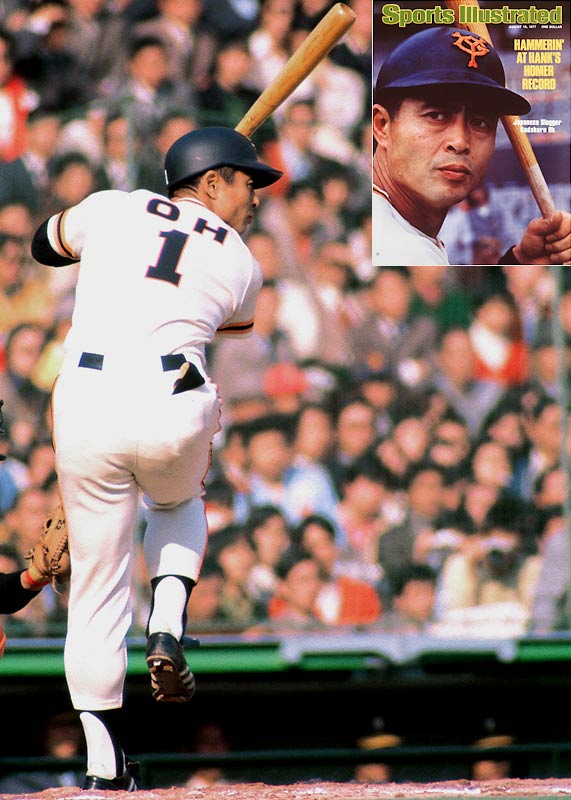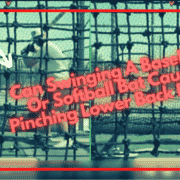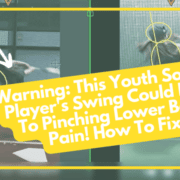Do ONLY Strong Baseball & Softball Players Hit Farther Homeruns? How Far? Can Average Person Do It? Sadaharu Oh Lessons On How To Get First One!
Do ONLY strong baseball, fast-pitch, and slow-pitch softball players hit farther home runs? And how far? Can an “average” person hit home runs? See how 14u small slugger Hudson White beat BIG slugger Blaze Jordan in the Power Showcase home run derby. Learn Sadaharu Oh lessons on how to hit the first homer.
Sadaharu Oh: 5’10” 173-lbs, 868 Dingers Over 22-Years – How?
According to Baseball-Reference.com, the “Barry Bonds” of Japanese baseball, Sadaharu Oh:
- Is 5-foot, 173-pounds, and
- Hit 868 homers in 22 years (that’s almost 40/season!!)…
How did he do this?
Sadaharu Oh Analysis: Your Mission, if you Choose to Accept it…
Watch the above hitting footage, and identify – what you think – are the two most critical things contributing to his consistent power at the plate over a 22-year span.
Of course, Sadaharu Oh probably wouldn’t have put up those kind of numbers against today’s Major League pitchers. BUT still…his body type…that many homers…for that long???!
Also, did you know he has a hitting book out? It’s called “A Zen Way Of Baseball”.
SCIENCE-BASED TRAINING:
Improve your hitting strategy dramatically by applying human movement principles.
Learn not only how and what to train but also the science behind the methods.
I had an interesting conversation about Oh with one of my colleagues about if he were playing today, and was recruited over to the MLB, that coaches/instructors would probably make him a slap happy version of Ichiro Suzuki.
This actually makes A LOT of sense when you look at conventional American baseball/softball wisdom to make a “small left handed hitter” into a situational ground-ball inducing machine. There NEVER would have been a “Sadaharu Oh”!
I agree there are roles to play in a lineup, and of course there’s a time and place for situational hitting, but if we taught ALL our hitters effective hitting mechanics, then what kind of metrics could a small slugger put up in-between?
Could we have a Dustin Pedroia-type who hits a 162-game average 15 dingers and 44 doubles?! In addition, to be a bunting, hit-and-run, move ’em over extraordinaire! Why can’t EVERY hitter experience repeatable power…?
A couple things to keep in mind when analyzing and commenting:
- Use human movement science as a rule of thumb (un-weighting, spinal engine mechanics, springy fascia, etc.),
- Be open minded and positive in the comments (no “spitting” on someone’s shoes PLEASE),
- Clarify by giving a “time stamp” in the video to see what you may be talking about…
You can post your thoughts in the “Leave a Reply” section below…
- Master Your Swing: How to Choose the Best Baseball Hitting Training Videos for Immediate Skill Boost - February 28, 2024
- Mastering Advanced Baseball Techniques: Personalized Online Coaching Elevates Youth & High School Hitting Skills - January 17, 2024
- Master the Art of Batting by Doing the Opposite of What You Think - January 16, 2024














Interesting ‘assignment’ you’ve given out here Joey. I’ll be very interested to see the feedback. This gentleman would not have made it in North America – and the reason I say that is because a good deal of what he does, and what made him a success, would have been coached out of him if he was over here. He does too many things ‘wrong’ according to popular belief among baseball people in N America, but to my way of thinking are actually the best way to hit. He does all the things you mentioned in terms of what you identify as essential to a consistent and powerful swing, but to me his greatest asset is his ability to choose and manage his point of contact, and his ability to find the sweet spot of the bat. He squares up the bat to the ball as well as anyone who ever swung one. I couldn’t help but think that in some of the swings he looks somewhat like Ted Williams at the finish! Go figure.
I won’t go into a lot of detail about each point now, but here’s a quick run down of what I see him doing that goes against mainstream hitting philosophy. I know you said pick two, but I wrote down these five.
#1 … He starts the bat and his upper body moving first, and in most cases before his foot touches down. The last swing on the clip is a good one to see this, but you can see that he most certainly starts his swing with the upper body.
#2 … He lands with his foot open. Most of these hits are pulled, so it’s not clear how he approaches pitches on the outside, but he lands open. He opens his foot as it’s coming down, and allows that movement to fire rotation – and at that point his bat and back arm are already well engaged and he starts full and complete trunk rotation. His bat is moving as he’s coming forward! In fact … it goes at almost the same time he starts his forward move, and he adjusts to pitch height and speed in a way that would get him cut in N America.
#3 … He chooses a contact point that is well out in front of his front hip. Most coaches over here would tell him to let the ball get deeper – which is really detrimental to a smaller player.
#4 … He has both arms extended at, or near contact. Letting the bat head travel farther will give it more time to reach terminal velocity. Thus … he gets his arms extended and picks a point of contact that is more out in front. Frank Thomas did this as well. He says that he liked to stand further away from the plate and get both his arms extended, and in an interview after his Hall of Fame induction, he credited this for his success at the plate.
#5 … He’s a ‘pull – push’ hitter. By that I mean that he uses his arms more than most coaches would teach, or allow. This guy definitely throws the barrel of the bat at the ball. He obviously gets a good, explosive rotation of his entire torso, but he gets his arms into it early and they stay in it to the end. He ‘pulls’ the bat with his lead arm to help start it, and then he ‘pushes’ it through to finish with his left arm. That’s how he gets that whipping effect/snap-of-the-wrist to punch the bat head at the ball right before contact. Most coaches teach their players to leave their arms in more or less the same position/angles throughout the beginning and middle stages of the swing, and bring the bat head around and through to contact via rotation – and then extend and follow through. That may work for big, barrel chested players, but not for smaller guys. This gentleman uses his arms very, very well.
I agree with what Bob said, to an extent, about getting aspects of his swing coached out of him. However, there are a lot of Japanese hitters in MLB and they all hit like Oh, who trained with a Samurai sword! They have been able to preserve their swings. Probably, because they don’t speak English all that well, all they have to learn to say is “I don’t understand” and continue to hit the Zen way of the Samurai, which is not just their way but the way of all warriors around the ever shrinking world because they exhibit universal human movements. Just ask Phil Jackson. To answer your question: What aspects of universal human movement does Oh exhibit? Here you go:
(1) He compresses his springy fascia like the best Tensegrity model by starting backwards with his counter-rotationary move of bringing his front shoulder down and in, achieving slanted shoulders. In so doing, he conserves linear momentum, pausing momentarily before striding foward, thus making effective use of gravity. Also, in doing so, he turns the key in the ignition of his spinal engine with some back flexion and lateral extension. So, if he completed two of these movements, he had to do the third somewhere as Dr. Gracovetsky said.
(2) He strides at at least a 45 degree angle but a bit into the plate, thus violating his heel line which does not give him optimum hip rotation by creating friction (he doesn’t do that on every at shown, though). He does land with the heel of his front barely touching the ground which gives him more surface on the bottom of his front foot with which to push off the ground. Isaac Newton, an Englishman no less, would be proud of Oh exemplifying his 3rd law of motion.
(3) He conserves angular momentum in the fight position by tucking his back elbow and with a slightly bent front arm. Then he unleashes great angular velocity but could create more with more of a bend in his front arm.
(4) He is on pitch plane for a good distance and stays there by extending his front arm into contact increasing his moment of inertia and decreasing his angular velocity (not sold on that at this point in time but…). He reverses the shoulder slant by the moment of contact and in so doing activating the springy fascia he compressed.
(5) He doesn’t follow through efficiently, which he could with a two handed follow through. Thus he doesn’t quite complete the reversal of the shoulder slant and the equal and opposite reaction of the elbows. Sorry Sir Isaac.
How’d i do? Hope I passed the test, teach. You can’t see my tongue planted firmly in my cheek. So, I will use this. 😉 As Forrest Gump said, “That’s all I have to say about that.” Happy New Year!
The two most important? #1 linear momentum and #2 utilizing his springy fascia (catapult loading system)
Joey! I love the comments! I hope his swing proves that if your doing enough right, you still be successful. On Path, bottom half of the ball on time. I understand the science of it, but I hope young players will study him and understand what it is he’s doing efficiently that allowed him to do so well. He had more success with less hip turn that 95% of hitters trying to overrotate their hips. Their are certain movements that are more or less necessary in the swing. If a move doesn’t pull you off path or off time, it isn’t a major issue. Could always be better, but unlike other movements that divert the body from the proper swing path or connection strength, his “bad” movements are minimal….and in my mind, is a very disciplined swing because of it.
Interesting career. 2700 hits, over 800 home runs. Chris o’leary of chrisoleary.com has great analysis of how pitch planes have changed over time and how baseball swings have adjusted. While o’leary is speaking of U.S. Players the analysis holds true in Japan too. Oh played in a fastball, high plane era. Similar to Ted Williams and Ruth before him, he was exceptional at Blocking the front side and loading the fascia (creating torque, whatever you want to call it) with his downward shoulder angle (squeezing the X).
But his blocking is amazing in my opinion.
I wonder how many coaches today would try to “fix” his shoulder flying out 🙂
Hides his hands and snaps the towel
As to Bob’s comments…. Right on!! Would coach it right out of him. The foot open enough is super important because that angle of the foot determines how the hips can rotate. Closed foot limits you on inside pitches. OH used the ground at the right time. When his right heel lands, he does not spin, he used the ground (Ground Reaction Forces) to open his hips way up. To understand these GRF, all you have to do is try to swing a bat while standing on ice.
Great comments guys!! You guys will love this, Bob Hall found this YouTube video gem of Oh explaining his swing on a Japanese day-show:
Just turn the volume down and fast forward to spots where he’s demonstrating the swing. Sometimes, what he’s doing physically – to demo – isn’t what he’s actually doing in games. Shocker I know. But what’s cool is, you don’t need to hear what he’s saying to understanding what he’s thinking 🙂
He gets great separation between his front foot and hands. His head stays in one place. Most interesting, though, is the bend of his back. While keeping his head in one spot, he goes from a bowed back (even hunched over the plate), to a straight back. It’s like his spine is a bowstring that snaps thrust out through his hips, though the hands, and into the ball. I’d call it functional flexibility, but it creates a very unique link in the kinetic chain from the lower half of his body to the upper half. Very interesting!
Great observation Mark! I totally agree.
Great comments guys. Wonderful conversation. Enjoyed reading them all. Very unique.
I most of missed this one Joey… Look at his bottom 3 of his lead hand when he does his snaps…
More importantly… just look at his rib cage and pelvis when he’s just talking… Compare him with let’s say Ben Hogan… Ted….
Look at his hands… His hands are the same as Hogans…. Seriously… the same….
What I love is this pulling the bow that many do… One …that only shows half of the swing and two ….most people still miss that point…. So it’s not the pulling of the string… You can’t pull shit if your other hand isn’t holding it right to start… So think about what that lead hand does and than there’s the second part that the bow thing fails to teach…
The fact is the swing is above the shoulders… This is seen in the rib cage and pelvis alignment… If your ever below THAT plane… your done…
You want the right feel… stand next to a short table… than hold yourself up with your hands… Notice where your holding ( pushing) yourself up with your hands and how that feels…You can’t use your core unless you set that up…. Said another way, your core ( core is so BS, it’s your deep front line I think but core is for sure outraged) needs solid connects….By the way… when holding yourself up… be sure to try using your hands in all directions….Fingers pointed forward and at you…etc…
The funny thing is if your not seeing the rib cage and pelvis than it’s purely a guess on advice… and if a batter doesn’t get the results… well I guess it wasn’t meant to be…Funny …
The fact is if you get the ribcage and pelvis right… You can do just about anything and get good results…Obviously the hunched position helps with this but there’s a trick to it beyond what I commented in other posts….
Hope all is well… I’m out!!!!
~DM
The more I watch him hit… he reminds me of Hank Aaron… I’m pretty sure nobody else see it… Its because he so SOLID… He just turns into the ball… The bat becomes part of his body…He’s not swinging a bat…He’s hitting….And if your hitting… you can get away with just about anything….And still be awesome…
~DM
I totally agree Djura, great thoughts on that.